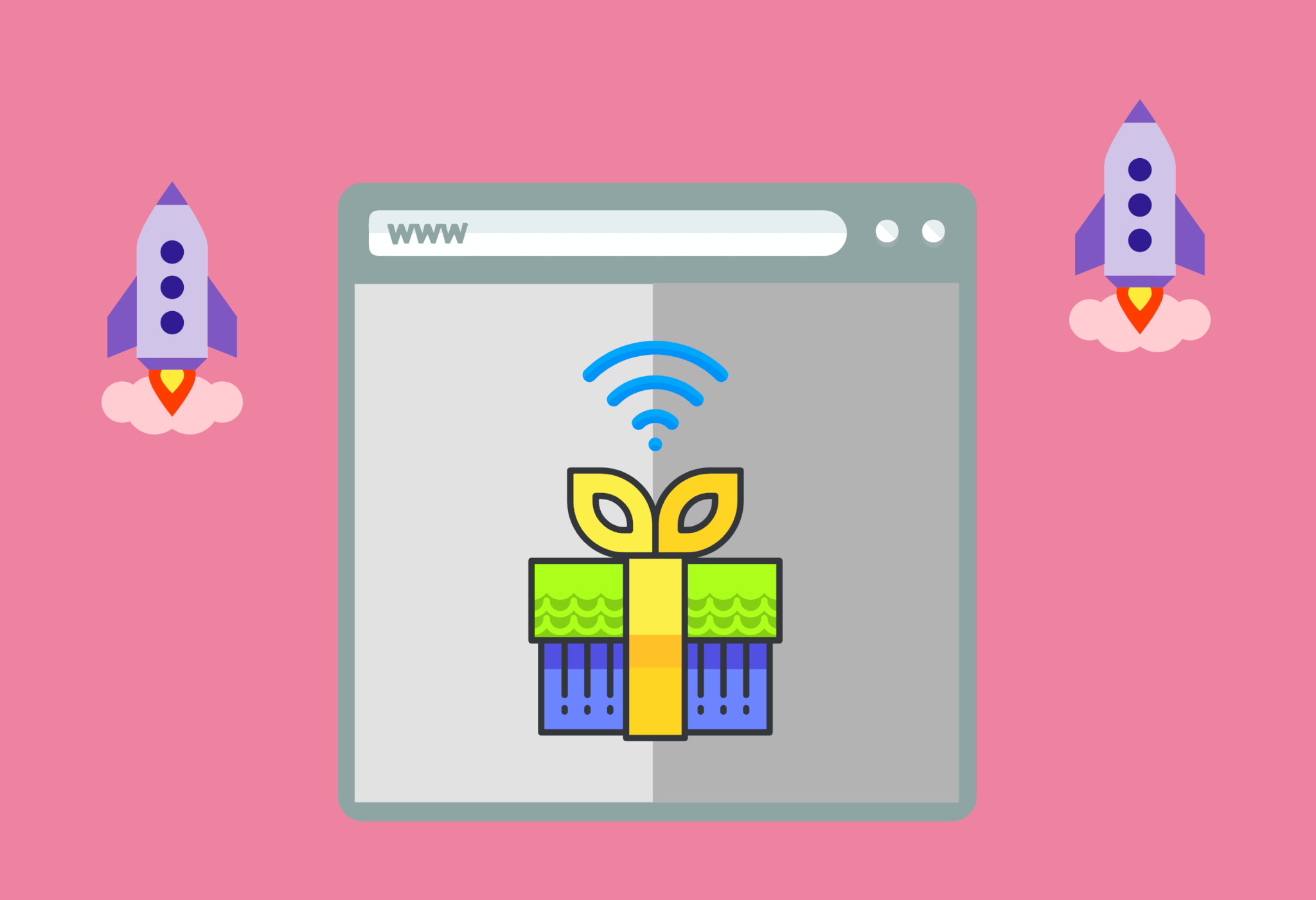
Why New Product Launch Marketing Plan is Important
Remember this classic (almost vintage) video made by Drew Houston, the guy that is CEO of Dropbox.
This video drove hundreds of thousands of people to the Dropbox website. Their beta waiting list went from 5,000 people to 75,000 people literally overnight. And a bit later projected Mr. Houston’s net worth into the 3 Comma Club. (BTW, I’m a bigger fan of pCloud)
At the time, Dropbox didn’t even have Dropbox working. So nobody knows if that video was real or just a few fake screens put together in Adobe Premiere. But who cares?
Having a pre-launch list of emails is important if you want to be the next Dropbox. Without a pre-launch, your new product launch marketing plan will be incomplete.
Even for the less ambitious people (like me) who will suffice with a couple of thousand targeted prospects, collecting pre-launch emails is one more step to minimize the risks of building something nobody wants.
Now, I don’t know what is harder: validating an idea or getting people to sign-up for your non-existing product. But I know it’s worth going through the whole process if you strive on an organized lean startup execution.
In this post, I will show you how I got almost 1,300 targeted prospect emails in less than 3 weeks for the pre-launch of HeadReach. And 550 organic Twitter followers. All that with 0 budget.

Even though I’m writing about the pre-launch of HeadReach, this is a good read for all email list builders, especially the first-timers who aspire to grow a list starting from 0 without any previous audience.
I’m proud of this achievement for 2 reasons:
- Our initial goal was 1,000 qualified emails in 4 weeks. Even then my co-founder and I thought we’re over-optimistic with that number.
- At WooGuru, I was doing email list building with inline lead magnets and popups but was only able to collect around 500 emails for the last year since we’ve been running WooGuru.
So, yeah, that’s good pre-launch execution in my books.
Why Pre-launching?
The concierge MVP method I described in my first post gives you a good understanding of what your potential users might want and some critical qualitative data. The problem is: it’s on a very small scale to make a significant judgment if you’d be able to attract a larger number of customers.
This is where the pre-launch (in my opinion) comes. To test your hypothesis on a slightly larger scale and collect some quantitative data.
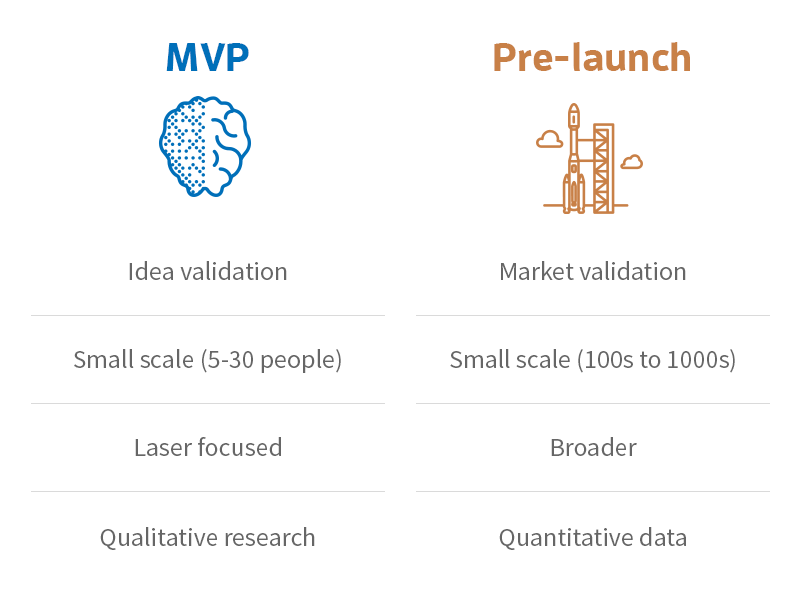
Another reason you want to collect emails is that email marketing works. Now I can’t brag with a constant 31% click-through rate on my email campaigns, but I’m ready to hustle hard to convert at least 4% of the HeadReach pre-launch email list to buying customers.
Why You Should Define Your Pre-launch Goal First
Before we get to the pre-launch marketing ideas, you should identify your #1 pre-launch goal.
Is it going to be pre-sales, email list building, beta user testers, or something else?
Make it challenging but achievable and put a number and date to it.
For HeadReach, our primary goal was collecting emails, which we later are going to try to convert to paying customers. We wanted to collect 1,000 emails in 4 weeks.
This would make us feel confident we have a validation that could be quantified, rather than just conversions (which, BTW, are very important, too, and I wrote about that in my previous posts).
I was also inspired by all the success stories of people using online course platforms to sell courses and training to their email lists, and how profitable an email list could be if nurtured properly.
Check out these numbers of launches empowered by email lists.
Sales are for a single launch via an email list – not overall business sales:
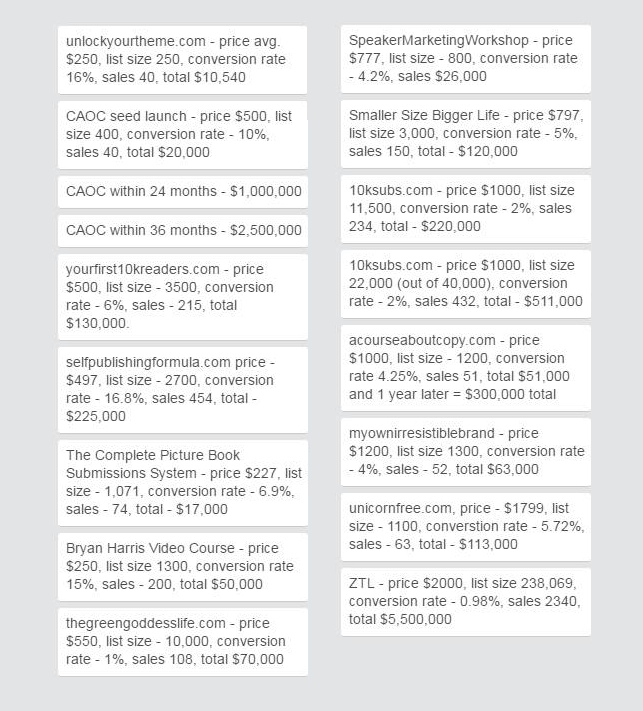
Exciting, right?
Data is provided by The Rise to the Top and by my friend Ivaylo. Ivaylo runs Day One Funding where he teaches hardware startups with upcoming crowdfunding campaigns how to get free press. Sign-up for his upcoming course.
Before we jump into the nitty-gritty of building your pre-launch list, I want to take a chapter on what to avoid.
Things to Avoid During Pre-launch
As much as I like the democratization of business validation that LaunchRock brought to us with their easy-to-use and fast-to-deliver automatic landing pages, I think it skewed the expectations of aspiring startuppers.
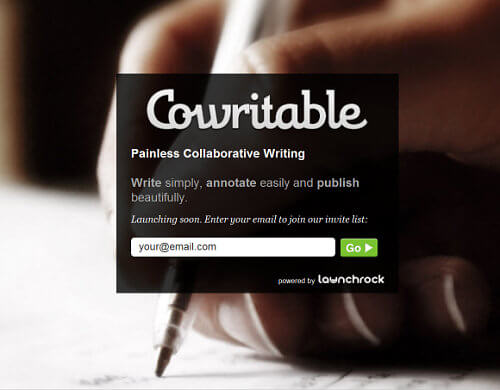
Maybe 5 years ago a landing page like that would be enough to generate some early days traction and interest, but today there’s a hell of a lot more noise in the startup world and very little interest for pre-prototype, pre-revenue startups.
Let’s say you run a startup in Europe. Let’s take London as the biggest entrepreneurial hub in Europe. Here’s some data from a trusted source of mine:
There are close to 500 serious funds in London. Take around 250 companies 12 months 500 funds, you’re looking at 1.2 million pitches per year going around London at any one time. The competition is hugely fierce in London at the moment both for Venture Capital and end-users.
And that’s just London…
Now, don’t get me wrong I don’t ask you to spend months on designing a sexy landing page and building a prototype, but providing value as part of your pre-launch is a must if you want to stay afloat in the startup sea of pre-revenue companies.
A simple landing page like the one above is still useful during the customer development stage if you’d like to collect a few targeted emails and refer interviewees to your site. However, if you want to get the buzz on your startup going around, you need to create more value than an early beta invite.
So let’s jump in.
How to Provide Value to Your New Product Launch Marketing Plan
For the pre-launch of HeadReach I started with thorough thinking on what I could deliver that is:
- Worth leaving your email for.
- Worth sharing and telling your friends.
- Worth making you engage with me in a conversation.
Because the cornerstone of our product is content marketing, and also this is something I’m naturally good at, it was a no-brainer that I was going to write something.
You drastically increase the chances of gaining early days’ traction when you provide more than just closed beta access.
Just sit and jot down a few marketing assets that you could give away in exchange for an email (or whatever your task is). It must be easy to scale.
Examples:
- A free PDF report in your field.
- A guide.
- Free eBook.
- A video course.
- A deal/promo/giveaway.
- Cool merchandise (stickers, T-shirts, etc.) – although be careful with that one. You don’t want to spend your development budgets on getting people dressed.
2 Indicators of the Perfect Lead Magnet
A lead magnet is called the thing that you’re going to use to bribe your site viewers to accomplish your task (give their email, sign-up for your beta, etc.)
Now you’re going to hate me for this, but there’s no sexy trick/silver bullet/easy fix/whatever that will make sure you create a lead magnet of real value. You just have to sit on your ass and make it.
For the HeadReach book, I spent over 240 hours writing and maybe that many hours formatting, designing, and promoting the book.
As much as I loved to claim ownership of some kind of fancy formula to help you create a magnet that people would leave their emails for, I can’t. I just sat down and got shit done:
152 pages of unique content, 4 bonuses in the form of swap files (spreadsheets and lists), and 18 interviews with influencers.
There are 2 bullet-proof indicators that you can refer to question the quality of your lead magnet:
- Is this something I’m proud of sharing on my social feed?
- Is this something people would question my sanity for sharing it for free?
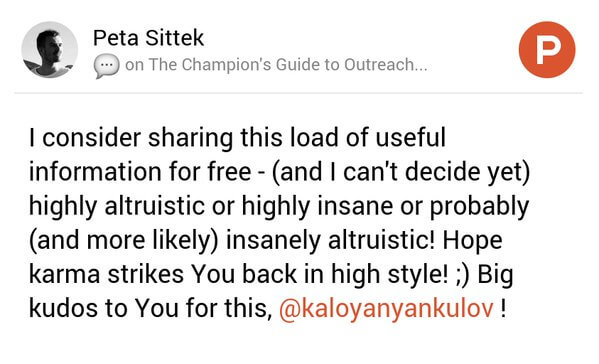
If the answer is yes, you’re set up for a successful pre-launch.
In the next section, I’ll show you some excellent lead magnet examples to inspire you. I’d like you to spend some time on your lead magnet because this is what will make or break your list-building/pre-launch campaign.
5 Solid Lead Magnet Examples
Lead Magnet Example 1: A Cheat Sheet for Writing Blog Posts That Go Viral
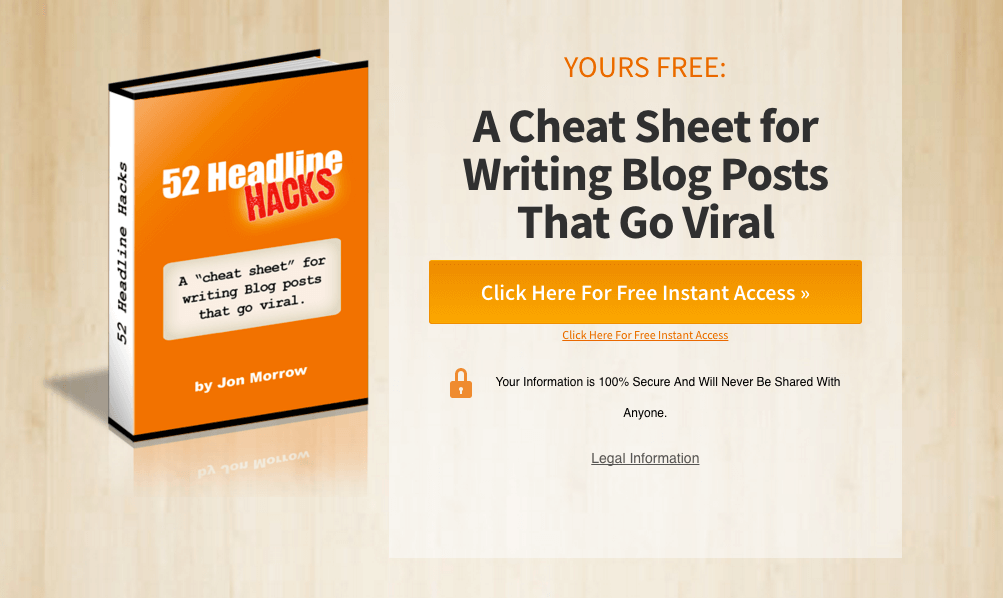
This cheat sheet by Jon Morrow generates over 50% conversion rate. Although it was created years ago, it still brings new email subscribers for BoostBlogTraffic (now SmartBlogger).
The magnet is a 70-page, easily digestible compendium of headline examples that you can use straight away, along with some examples for inspiration.
Lead Magnet Example 2: 5 Foods to Never Eat
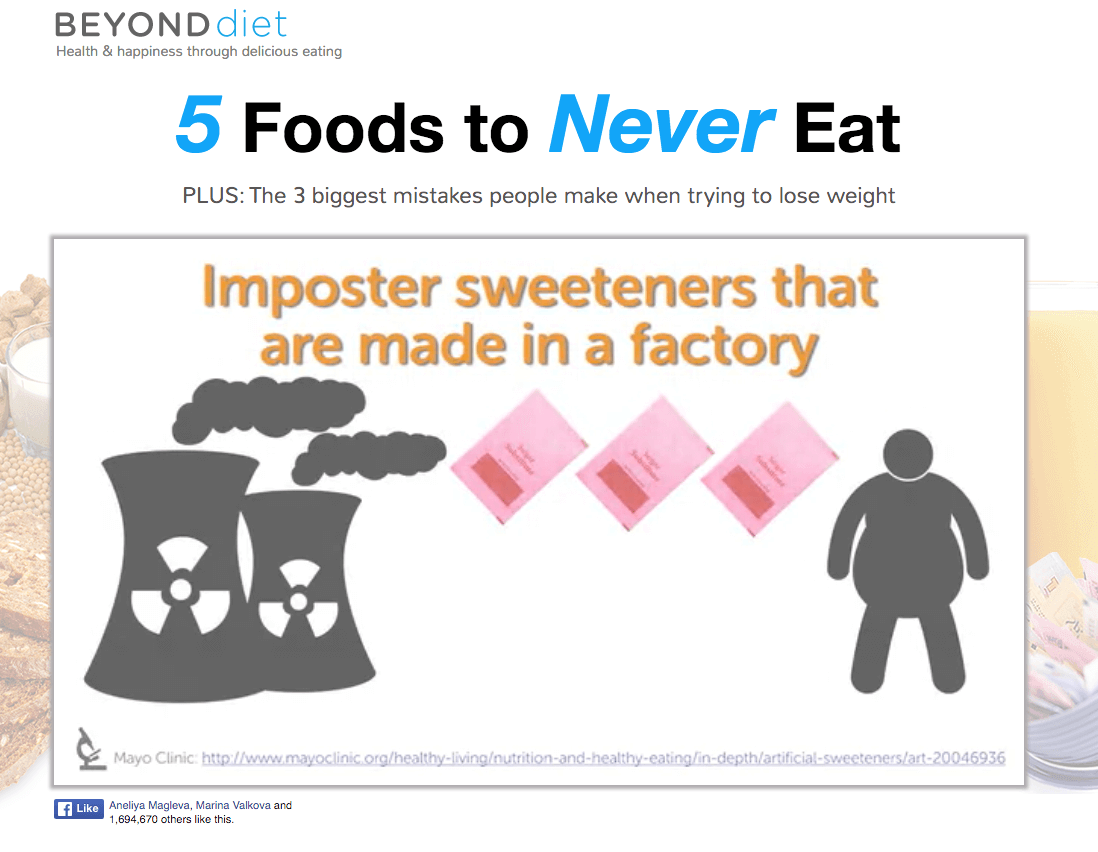
One of the leading magnets in the fitness industry. Isabel, a certified nutritionist, has created this catchy video and uses the power of negativity in the headline to draw the viewer into leaving their email.
The video apart from being catchy contains a lot of valuable data and tips.
Lead Magnet Example 3: Learning to Launch
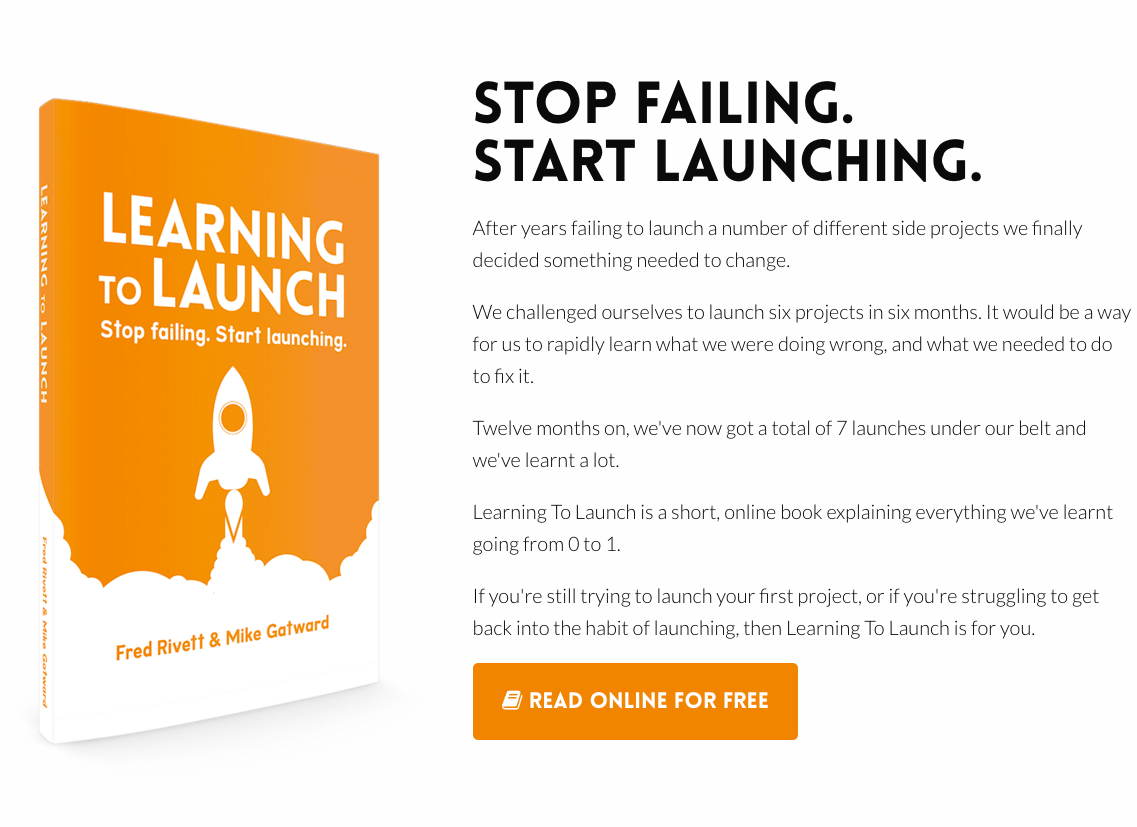
Learning to Launch is an eBook for aspiring entrepreneurs who strive not to fail when launching (like me, and I guess you). The interesting thing about their approach is that they’ve published the whole eBook for free as an online guide.
Consider giving your best content away for free without even putting it behind a lead gate, and offer content upgrades.
Lead Magnet Example 4: Write More Compelling Copy With This One Tip

Melanie Duncan knows how to work with attractive titles and lead funnels. She uses the CTA a few times throughout the landing page.
Once you submit your email, she takes you to a video that describes what you could get from writing a great copy (tip: providing a lot of value).
The lead magnet is a simple 3-page worksheet that is very well-designed. Then you’re given an option to trial her membership program for just $1.
On an end note: Danavir from CopyMonk has a comprehensive round-up of lead magnet examples for your personal inspiration.
Lead Magnet Example 5: The HeadReach Book
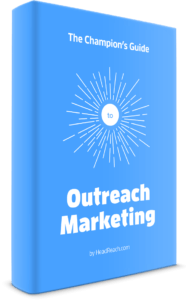
For the HeadReach lead magnet (which you can now find here), I wanted to create a free eBook with a ton of value and professional design.
I use a writing tool called Ulysses. It’s perfect for larger documents (like big ass eBooks) and allows you to export them in style.
With a bit of custom CSS, you’d be able to apply a unique style to your book. Then all you need is a book cover.
I personally do mine in Photoshop (legacy to being an ex-designer), but you can use a tool like Canva.
Also, a great tool I stumbled upon recently was Beacon – it converts your blog posts into irresistible lead magnets (eBooks).
But wait — even if you have the best lead magnet in the world, you won’t be able to convert users if your landing page sucks.
Now for HeadReach, I created 2 separate pages: one for the closed beta sign-up and one for the outreach eBook lead magnet.
What I figured out is that this way I increase my chances of getting more leads because the pages attract people coming from different types of channels. The outreach eBook attracted mainly SEO experts and online marketers while startup co-founders and early tech adopters were more interested in the closed beta sign-up.
I’ll briefly dissect the landing page for the eBook.
eBook Landing Page Elements for Success
On the eBook landing page, we generate a whooping 26.4% CR despite having a 3-step sign-up process converting almost 900 email subscribers in about 3 weeks.
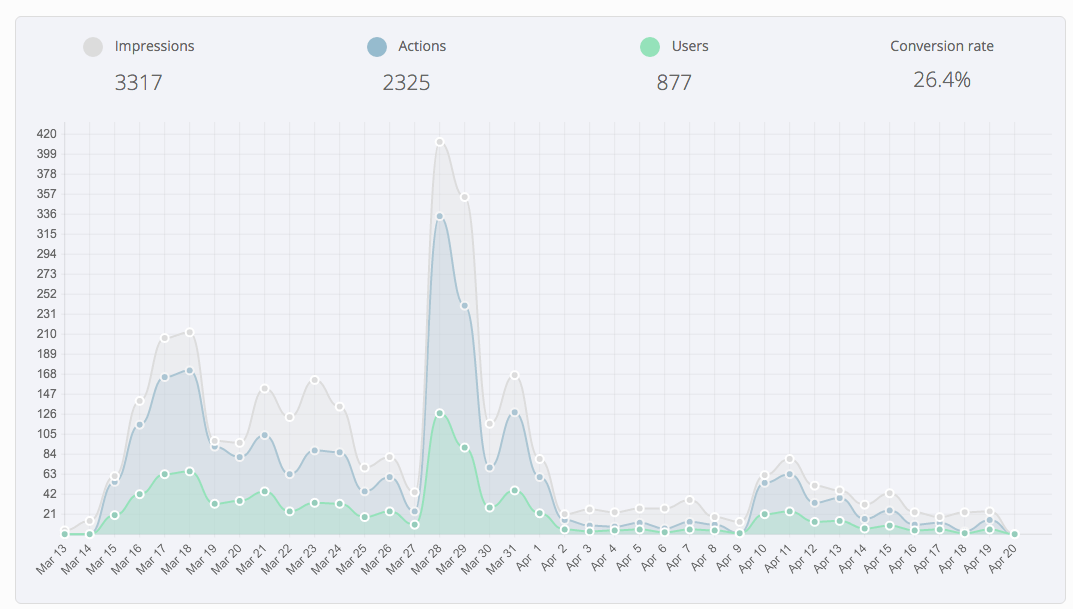
Now I can write a whole Kalo-sized guide (or eBook? 🙂 about landing page optimization, and I promise I’ll do that but in the meantime, I wanted to pinpoint briefly the main elements that contributed to the CR of that landing page.

Once you have your landing page ready for conversion let’s get to the funny part – marketing and promotion.
6 New Product Launch Marketing Ideas
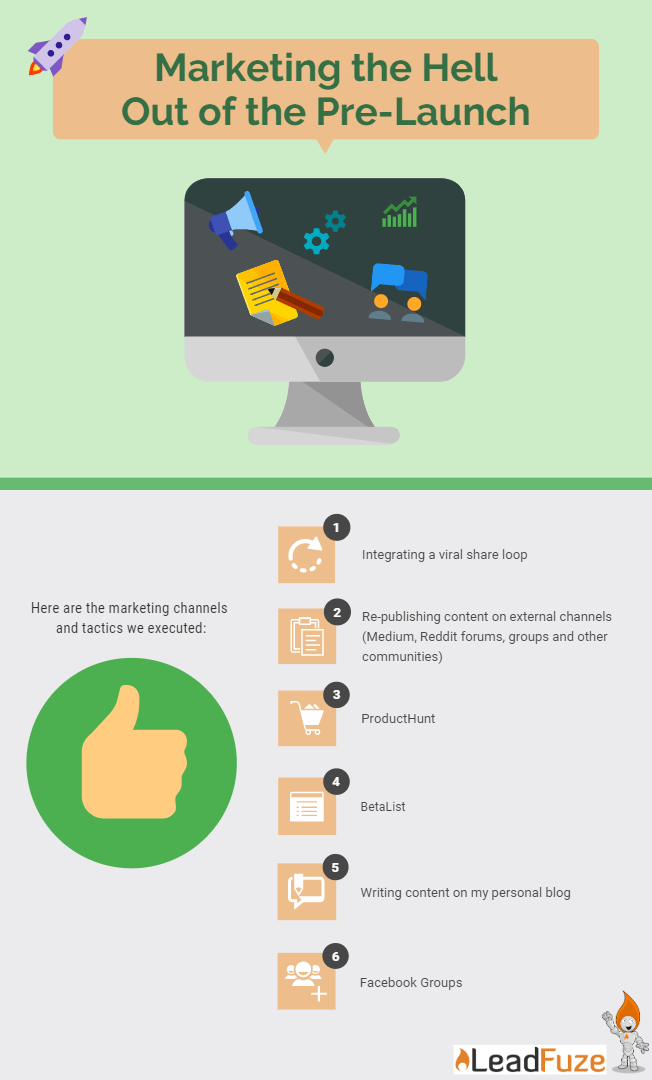
My pre-launch marketing campaign was led by a simple mantra:
F*ck SEO
As much as I love SEO, we couldn’t afford to wait a few months to see any traffic coming to our pre-launch page. We wanted traffic, and we wanted it now!
This is what our analytics looked like in the first week after we put the landing pages (eBook and the closed beta sign-up page) live:
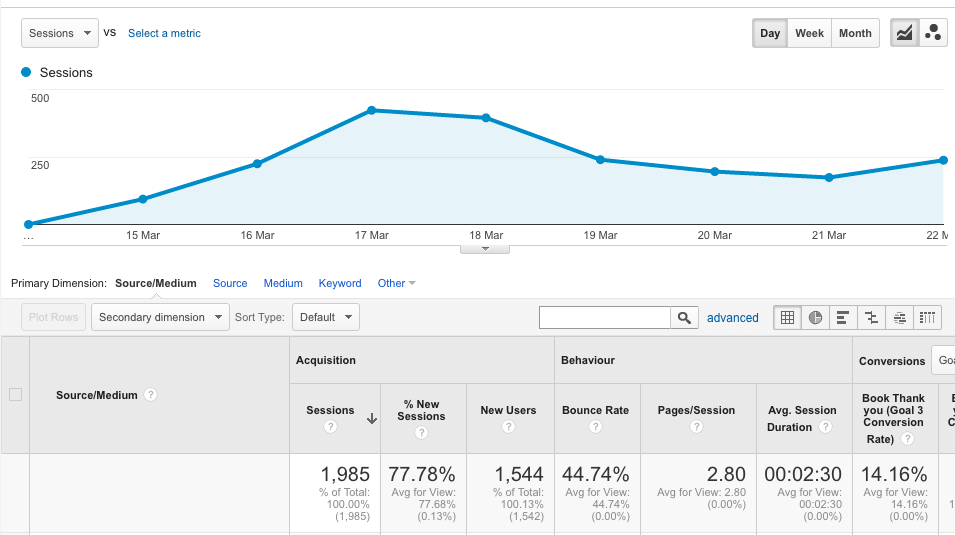
1,544 unique visitors in 7 days
And yeah, you guessed it right most of them came from Social (mainly Facebook) and referral channels like GrowthHackers and BetaList.
This is the analytics for the whole campaign (30 days since today) for the beta sign-up and eBook pages collectively:
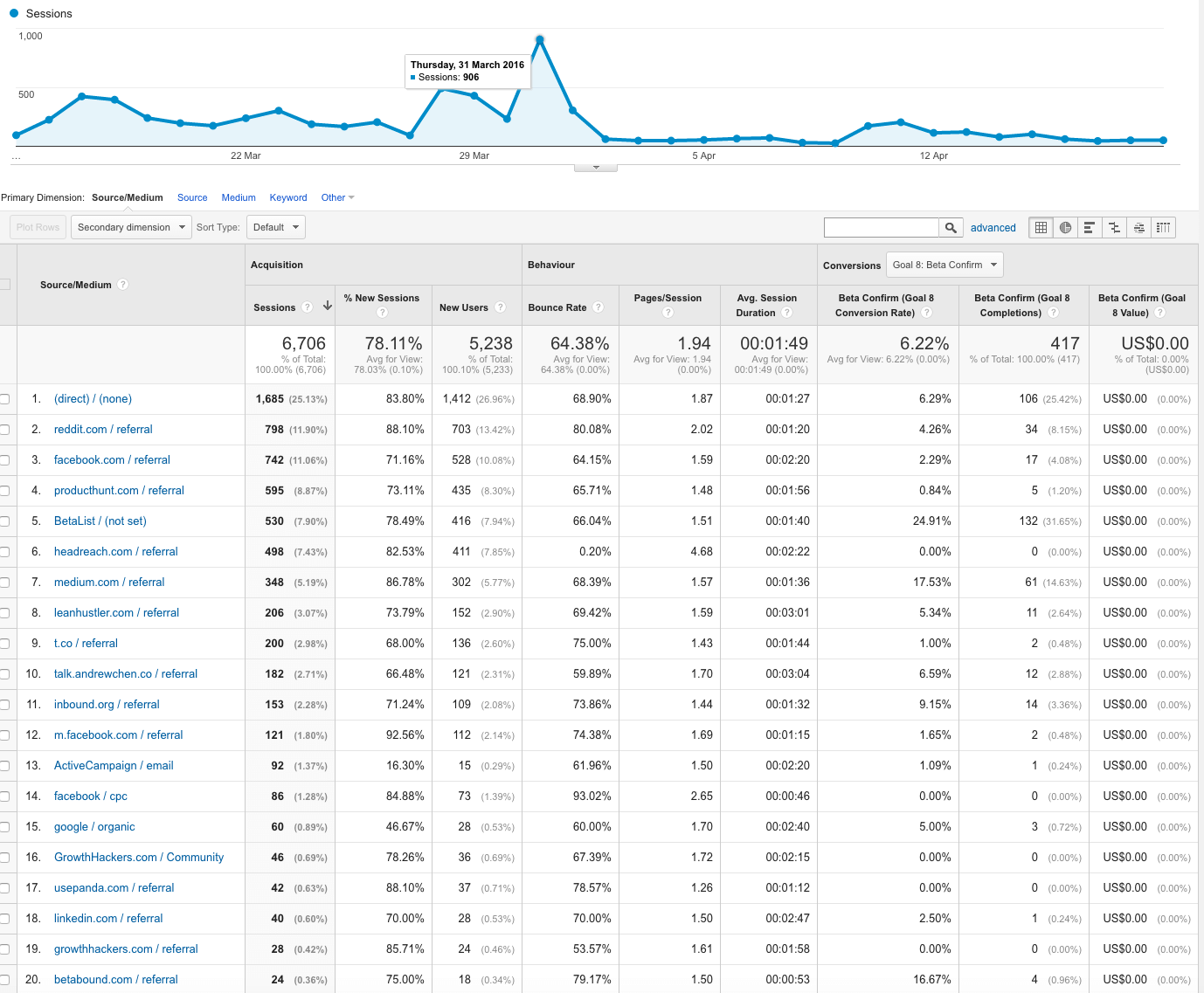
As you can see leading channels are:
- Reddit (798 sessions)
- Facebook – mainly from groups (742 sessions)
- ProductHunt (595 sessions)
- BetaList (530 sessions)
- Medium (348 sessions)
- and my personal blog (in Bulgarian)
We had a self-referral problem caused by the book preview plugin we used – Yumpu. It’s an amazing plugin with a lot of flexibility; it just generates self-referral traffic when you activate the Google Analytics function built in the plugin.
Here are the marketing channels and tactics we executed:
1. Integrate a viral loop
The social payment gate we’ve integrated deserves a lot of the credit for the success of HeadReach pre-launch.
We used an online tool called Gleam.io. Gleam helps you run giveaways, rewards, and other cool widgets to help you collect more emails.
While their focus is giveaways, they have an app called “rewards” which is a more advanced social payment platform. Think “Pay with Tweet” but with much, much, much more options and flexibility.
My initial thought was that we should ask for:
- A Tweet
- Twitter follow
- And a referral
Yes, that’s a whole 4-step sign-up process to get the eBook. And I was wrong. Only about 3% of all users were able to reach the last step and download the eBook. Most of them were surrendering after the 3rd step.
Then we iterated the process and took off the referral step completely asking only for an email, a tweet, and a follow. Things started to look on the bright side, and conversions increased drastically.
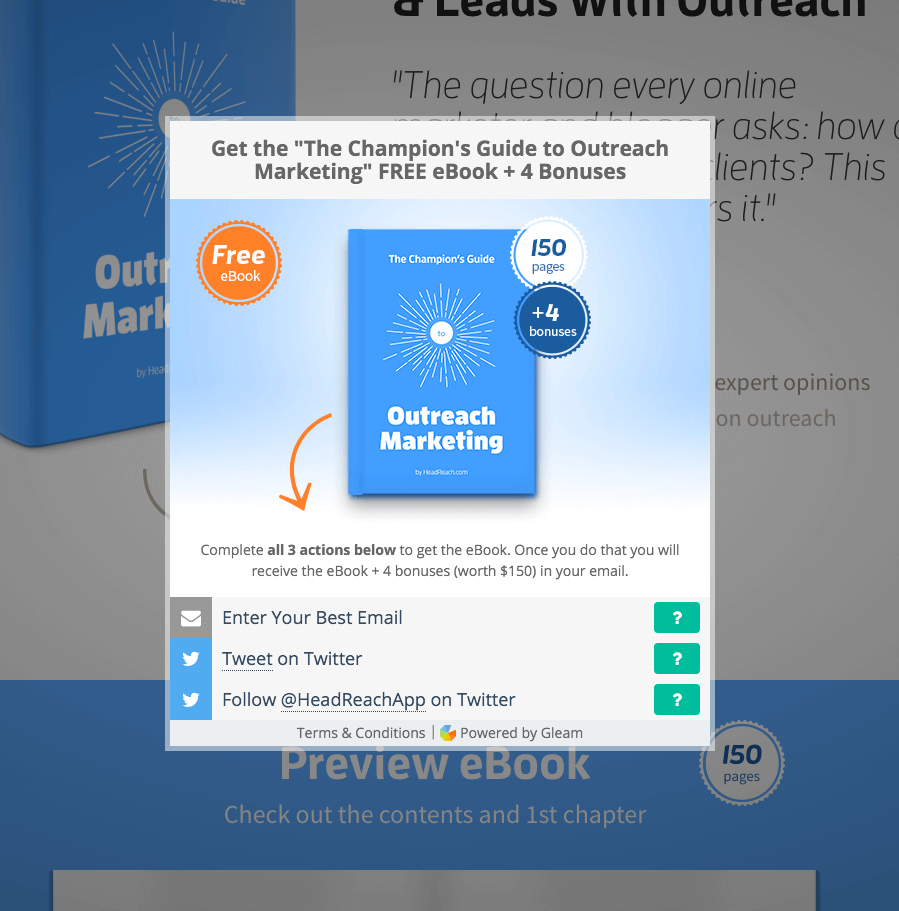
The point here is you have to find the right balance between the value you provide and the ask. Offering a free 150 pages eBook + 4 bonuses just for an email would have been way too altruistic, but I was wrong assuming that people would complete 4 steps to sign-up.
Gleam is a great platform to test and iterate on your rewards campaign, so I highly recommend it if you want to ask for something more than an email.
The viral share mechanism was one of the underlying marketing mechanisms we relied on for this pre-launch, and it turned out successful. It helped us gain a decent amount of traffic from social networks.
2. Republish content
Republishing is the tactic of leveraging existing audiences of other bigger external channels by publishing your best content on them. Think: posting your posts on Medium and Reddit instead of on your personal blog.
It’s not a great strategy for long-term gains but works just perfectly for quick traffic peaks. This is exactly what we were aiming at with our pre-launch.
Republish on Reddit
If you don’t know already – Redditors hate you. They’re very sensitive to any kind of promotion and are looking for the smallest opportunity to ridicule your manhood with nasty comments, satirical rants, and even ban reports.
There’s a cure, however!
Here’s, a step-by-step reference on how to own Reddit:
- Write a fantastic content piece – something helpful, a case study, how-to guide, or a tutorial.
- Post it on Reddit. You have to publish your best content inline, i.e. as a text post, not an external link.
- Get your friends to upvote your posts to get a little initial traction. Very important: do not send them to the exact post URL (deep-linking) as you risk getting shadow-banned. Send them to the Subreddit instead and make them find your post and upvote it from there. (Thanks to Nick for the tip).
- Don’t be discouraged and don’t get in confrontations if you meet an angry Redditor (like the guy above)
- Recycle your post and publish it in different subreddits. I had the same post get 0 upvotes in 1 subreddit and 124 in another.
Using these steps, I managed to beat my personal record on Reddit and got a post with over 100 upvotes, 50 comments, and a solid 9.40% email subscribers CR.

Republish on Medium
I didn’t have a Medium strategy designed. I just knew that the post would perform well on Medium because it was performing so well on Reddit already.
The only handicap I had was 600 followers because I had connected my Twitter account with my Medium account.
My first Medium article got almost a thousand reads in less than a couple of weeks and brought few hundred visits to HeadReach with an exciting email subscribers CR of 24.64%
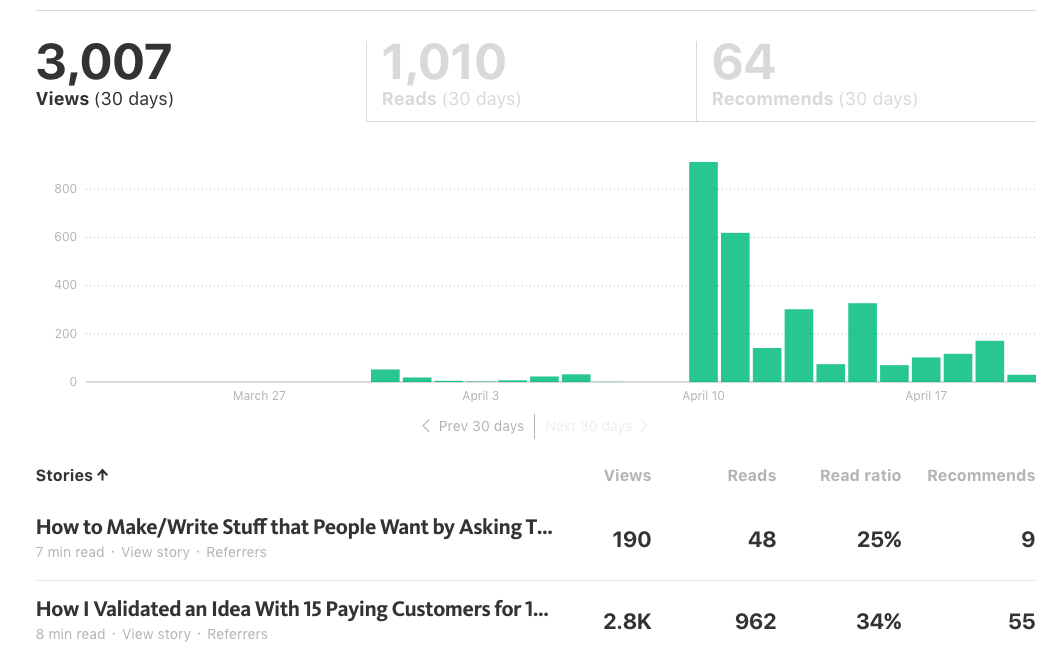
If you’d like to go deeper with Medium strategies and get even better results (make your article go viral on Medium?), you should definitely check Benji’s article
3. Launch on ProductHunt
By the time I launched my outreach marketing eBook on ProductHunt I had already collected about 400-500 email subscribers.
Now there are a lot of guides on how to rock ProductHunt, when to post and how to promote your ProductHunt launch, but the thing with books is that it’s so much easier to get to the first page because there’s so much little competition in books.
I posted my book on Tuesday and sent the following email to my existing email subscribers:
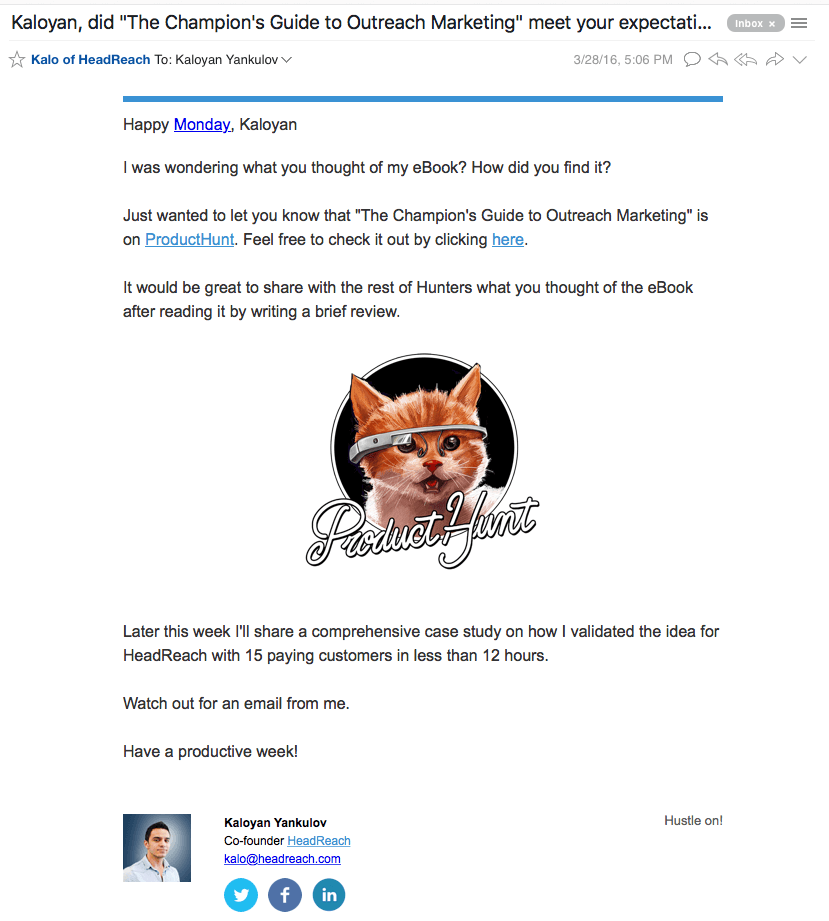
Now notice how I don’t ask for an upvote, but an opinion (review). This helped me get a little bump in upvotes and a few awesome comments for the book.
Results:

4. Use BetaList to get email subscriptions
BetaList is a great easy way to get some pre-launch email subscriptions, as long as you have a decent landing page.
It resulted in 167 email signups for the HeadReach beat at a 31.3% CR.
5. Write content on your personal blog
A couple of months ago before I pre-launched HeadReach, I started documenting my startup journey on my personal blog. It’s a little blog I write in my native language.

Because the Bulgarian startup community is yet so closed, I managed to get some solid traction by sharing my personal experience with startups, customer development, and lean validation openly. That helped me get some pre-launch sign-ups and shares on a local level.
6. Get traffic from Facebook groups
Facebook is the second channel with the most views to HeadReach. Most of the Facebook views came through Facebook groups.
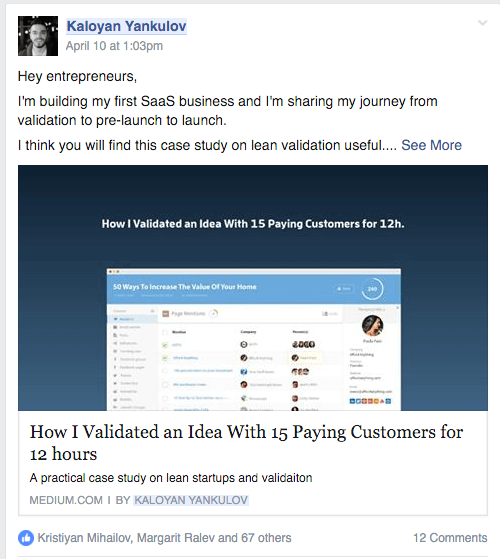
Here are some tips on getting traffic from Facebook groups:
- Deliver content of the least resistance. Similar to the republishing tactic, this method requires that you publish your content in the Facebook post itself, rather than linking out to your blog/site. Most of the people in Facebook groups are much more engaged on the platform and prefer to stay there rather than venturing away.
- Offer your best content free as an exclusive bonus for the group.
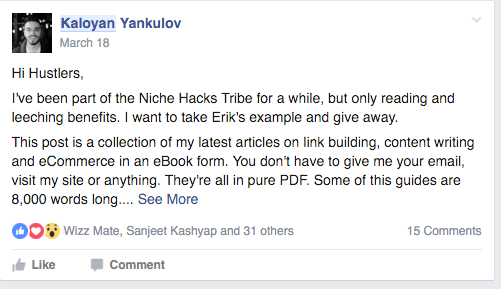
3. Engage with the people on your post gradually. Now, this is a bit of a gray hat, but done in moderation can increase the exposure of your post. Every time someone likes or comments on your group post, it goes to the top of the group. Staying in the above-the-fold area, your posts will get the most attention. So here’s a little trick to use to keep your post on the top of a group: Wait till your post drops in the group and then reply to comment under your post. That way the post will get a bump and go to the top again. The more comments you get on your post, the more manual bumps you can make, the longer your post will stay on the top of a group. 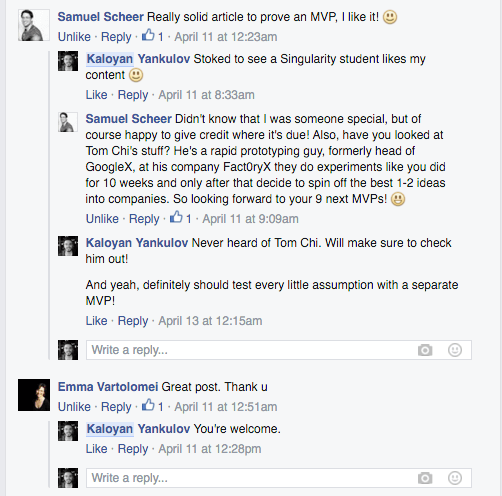
Facebook generated 742 sessions with 24% email subscription CR.
Conclusion
Our new product launch marketing plan helped us get:
We managed to get 1,300 emails in less than a month for the pre-launch of HeadReach:
- 570 emails from the closed beta sign-up page.
- 844 emails from the eBook landing page
- + 550 organic Twitter followers.
We created a massive 150 pages free eBook as a primary lead magnet. Then promote the hell out of it, integrating a viral loop with Gleam and content promotion by leveraging external communities and social media.


